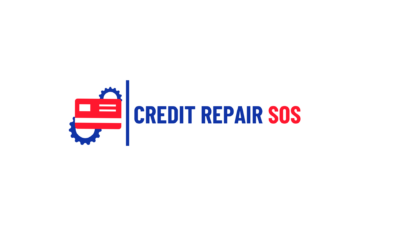
Credit restoration stands as a beacon of hope for those navigating the challenging terrain of credit scores, in the complex world of personal finance.
Whether you’ve faced financial setbacks or you’re simply looking to improve your credit, understanding the details of credit restoration is important.
This post contains affiliate links, which means I may receive a small commission, at no cost to you, if you make a purchase through a link.
What Is Credit Restoration?
Credit restoration, also known as credit repair, is the process of fixing any mistakes or problems on your credit report that might be dragging your score down.
This can include things like late payments, collections, or other issues that make you look less reliable to lenders.
The Purpose Of Credit Restoration
The purpose of credit restoration is to repair and boost your credit score, paving the way for better interest rates, loans, and a brighter financial future.
Think of it as a makeover for your financial reputation, correcting past mistakes and opening doors to new possibilities.
By addressing negative items on your credit report, you not only boost your credit score but also gain confidence to pursue your dreams.
Whether it’s a dream car or homeownership, credit restoration is your ally on the path to financial success.
Here Are 10 Steps To Credit Restoration Success
Embarking on a journey to restore your credit can seem like a daunting task, but fear not – with the right steps and a bit of patience, you can navigate this process smoothly.
Let’s break down the 10 steps to credit restoration success.
1. Get your credit report:
The first and foremost step in your credit restoration journey is obtaining your credit report.
You can request a free copy annually from each of the major credit bureaus – Equifax, Experian, and TransUnion.
This report is your starting point, providing a comprehensive overview of your credit history.
2. Check your credit report for errors:
Once armed with your credit report, scrutinize it meticulously. Look for any inaccuracies, discrepancies, or unauthorized entries.
Common errors might include incorrect account information, outdated balances, or accounts that don’t belong to you.
3. Dispute any errors on your report:
Don’t hesitate to dispute inaccuracies. Credit bureaus allow you to challenge any discrepancies in your credit report.
Clearly outline the errors, provide supporting documents, and await their investigation. Timely and accurate reporting is the goal.
Transunion address for disputes:
TransUnion Consumer Solutions
P.O. Box 2000
Chester, PA 19016-2000
Equifax address for disputes:
Equifax Information Services LLC
P.O. Box 740256
Atlanta, GA 30374-0256
Experian address for disputes:
Experian
P.O. Box 4500
Allen, TX 75013
4. Bring past due accounts current:
Tackling past due accounts is crucial. Contact your creditors to discuss payment arrangements or negotiate settlements.
Bringing these accounts current demonstrates your commitment to financial responsibility.
5. Keep your credit utilization low:
A key factor in your credit score is the ratio of your credit card balances to your credit limits. Aim to keep this ratio low, ideally below 30%.
This not only positively impacts your credit score but also showcases your responsible credit management.
6. Diversify your credit mix:
Variety is the spice of life, and it holds true for your credit portfolio too. Having a diverse mix of credit types – credit cards, installment loans, mortgages – can enhance your creditworthiness.
7. Leave old accounts open:
Closing old credit accounts may seem like a tidy financial move, but it can actually hurt your credit score.
Length of credit history is a factor, so maintaining those longstanding accounts reflects positively on your creditworthiness.
8. Negotiate with creditors:
Settling debts and establishing payment plans: engage in open communication with your creditors.
Negotiate settlements for outstanding debts or establish manageable payment plans.
Many creditors are willing to work with you to find a mutually beneficial solution.
9. Don’t take out credit unless you need it:
While it may be tempting to open new lines of credit, it’s wise to refrain unless absolutely necessary.
Unnecessary credit applications can result in inquiries that may negatively impact your credit score.
10. Pay bills on time:
The simplest yet most effective step – pay your bills on time. Timely payments are a cornerstone of good credit.
Set up reminders, automate payments, or utilize budgeting tools to ensure you never miss a due date.

Do-It-Yourself Credit Repair
The journey towards a healthier credit score need not be reliant on a credit restoration service; instead, it can be a rewarding and enlightening process when taken into one’s own hands.
Do-it-yourself credit repair offers a profound understanding of your financial landscape, identifying and addressing the root causes of credit challenges.
One of the most compelling benefits of do-it-yourself credit repair is the significant cost savings compared to professional services.
By investing time in understanding credit reporting, dispute processes, and implementing strategic financial practices, you not only retain your money but also build skills that will serve you well in the long run.
Resources And Tools Available For DIY Credit Restoration
Free annual credit reports:
Take advantage of your right to a free annual credit report from each of the major credit bureaus. This allows you to monitor your credit history regularly and catch any discrepancies early on.
Credit monitoring services:
Consider using a credit monitoring service that provide real-time alerts for changes to your credit report. These services can help you stay informed and respond promptly to any suspicious activity.
Online credit education platforms:
Numerous online platforms offer valuable resources and guides on do-it-yourself credit repair. These resources can provide insights into credit scoring, dispute processes, and effective credit management techniques.
Credit score simulators:
Some financial institutions and credit monitoring services offer credit score simulators. These tools allow you to explore how certain financial actions, such as paying off a loan or opening a new credit account, may impact your credit score.
Debt repayment apps:
Leverage budgeting and debt repayment apps to stay organized and track your progress. These apps often provide insights into your spending habits and offer personalized strategies for paying down debt.
Embarking on a do-it-yourself credit repair journey may require time and commitment, but with the right tips, strategies, and resources, you can take control of your financial well-being and work towards a healthier credit profile.
How Long Does Credit Restoration Take?
Curious about the timeline for credit restoration? It’s a bit like asking how long it takes to navigate a maze without a map – unique to each situation.
Your starting point matters, whether it’s a minor blip or a major financial setback. On average, expect around six months to a year for noticeable changes.
Patience is key as credit bureaus and creditors verify and update information. Proactive steps can speed things up. Regularly check your credit report for errors, dispute inaccuracies promptly, and establish payment reminders.
Negotiating with creditors for goodwill adjustments can also help. Remember, credit restoration is a marathon, not a sprint. With time, dedication, and strategic efforts, you’ll see your credit score transform.
It’s like tending to a garden – plant the seeds, nurture them, and watch your credit profile flourish over time.
Your Rights Under The Fair Credit Reporting Act (FCRA)
Under The Fair Credit Reporting Act (FCRA) you have the right to access a free copy of your credit report from each of the major credit reporting agencies annually.
This annual check-up enables you to keep a close eye on your credit history, identify potential errors, and address inaccuracies that could impact your creditworthiness.
Accuracy is a cornerstone of the FCRA, compelling credit reporting agencies to furnish precise and complete information about you.
Should discrepancies arise, the FCRA provides you with the right to dispute them.
Upon filing a dispute, the credit reporting agency is obligated to investigate and rectify any inaccuracies within a 30-day timeframe, ensuring the integrity of your credit profile.
